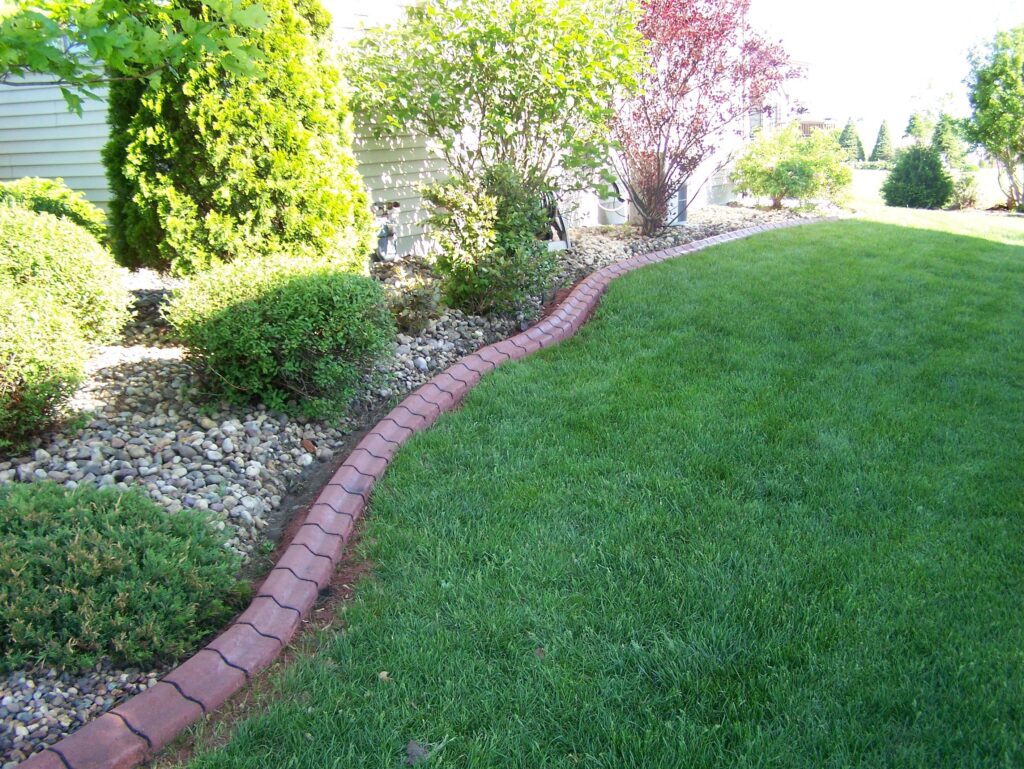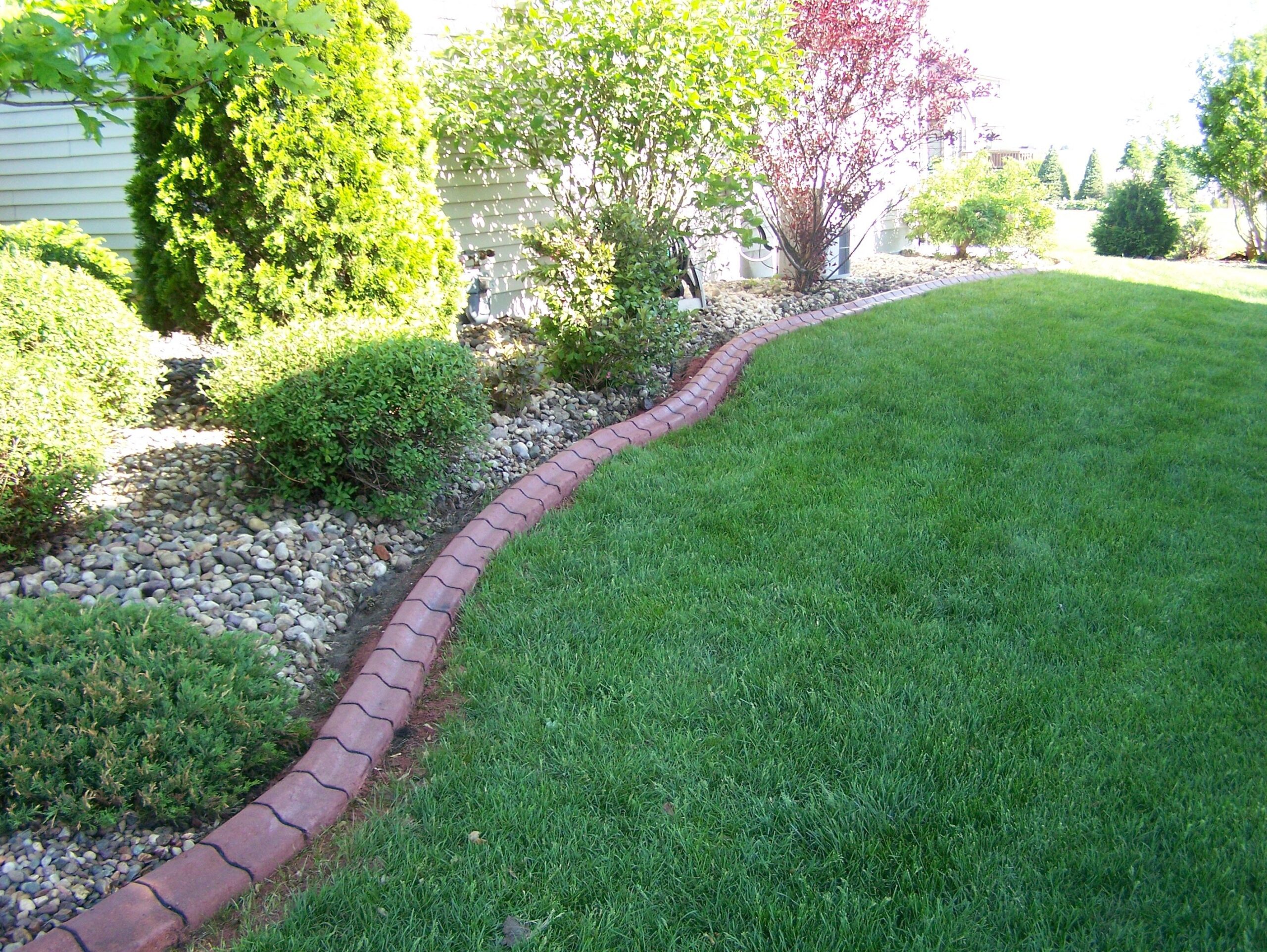
Elevate Your Landscape: The Definitive Guide to Professional Landscape Edging
Achieving a polished and sophisticated outdoor space often hinges on the finer details. Among these, professional landscape edging stands out as a crucial element, defining boundaries, enhancing curb appeal, and contributing to the overall aesthetic harmony of your property. This comprehensive guide delves into the world of professional landscape edging, exploring its various types, benefits, installation techniques, and maintenance strategies. Whether you’re a homeowner aiming to revamp your garden or a landscaping professional seeking to refine your skills, understanding the nuances of professional landscape edging is paramount.
What is Professional Landscape Edging?
Professional landscape edging refers to the practice of creating a distinct border between different areas of your yard, such as lawns, flower beds, walkways, and driveways. Unlike DIY solutions that may lack precision and durability, professional landscape edging emphasizes high-quality materials, meticulous installation, and long-lasting performance. It’s an investment in the visual appeal and structural integrity of your landscape.
Benefits of Investing in Professional Landscape Edging
- Enhanced Curb Appeal: Clean, well-defined edges instantly elevate the look of your property, creating a sense of order and sophistication.
- Weed Control: Edging acts as a barrier, preventing grass and weeds from encroaching into flower beds and other designated areas.
- Mulch Containment: It helps to keep mulch, gravel, and other ground cover materials in place, preventing them from spilling onto lawns and walkways.
- Defined Boundaries: Edging clearly delineates different areas of your landscape, creating a visually appealing and organized space.
- Protection from Damage: Certain types of edging can protect plants and other landscape features from lawnmowers and foot traffic.
- Increased Property Value: A well-maintained landscape with professional landscape edging can significantly increase the value of your home.
Types of Landscape Edging Materials
The choice of edging material is crucial and depends on your budget, aesthetic preferences, and the specific needs of your landscape. Here’s a look at some popular options:
Metal Edging
Metal edging, typically made of aluminum or steel, offers a clean, modern look and is known for its durability and flexibility. It’s relatively easy to install and can be bent to create curves and angles. Steel edging, in particular, is resistant to rust and corrosion. This is a popular choice for professional landscape edging due to its clean lines and longevity.
Plastic Edging
Plastic edging is a cost-effective option that comes in a variety of styles and colors. It’s lightweight, easy to install, and resistant to rot and decay. However, it may not be as durable as metal or stone edging, and some types can become brittle over time.
Brick Edging
Brick edging adds a touch of classic charm to any landscape. Bricks can be arranged in various patterns, creating a unique and visually appealing border. They’re durable and long-lasting, but installation can be more labor-intensive than other options.
Stone Edging
Stone edging offers a natural and rustic look. Stones can be used in a variety of sizes and shapes, creating a unique and textured border. They’re durable and long-lasting, but installation can be challenging, especially with larger stones.
Wood Edging
Wood edging provides a warm and natural aesthetic. It’s relatively inexpensive and easy to install. However, wood is susceptible to rot and decay, so it requires regular maintenance and treatment to prolong its lifespan. Consider treated lumber for professional landscape edging applications where wood is desired.
Concrete Edging
Concrete edging is a durable and long-lasting option that can be poured in place or pre-cast. It offers a clean and modern look and can be customized with various colors and textures. Installation typically requires professional expertise.
Installation Techniques for Professional Landscape Edging
Proper installation is crucial for ensuring the longevity and effectiveness of your landscape edging. Here’s a general overview of the installation process:
- Planning and Preparation: Determine the desired location and layout of your edging. Mark the area with spray paint or string.
- Excavation: Dig a trench along the marked line, ensuring it’s deep enough to accommodate the edging material.
- Base Preparation: Add a layer of gravel or sand to the trench to provide a stable base for the edging.
- Edging Installation: Carefully place the edging material into the trench, ensuring it’s level and properly aligned.
- Backfilling: Backfill the trench with soil, compacting it firmly around the edging.
- Finishing Touches: Add mulch or other ground cover materials to complete the look.
Tips for Choosing the Right Professional Landscape Edging Contractor
Selecting the right contractor for your professional landscape edging project is essential for achieving optimal results. Here are some tips to guide your decision:
- Check Credentials and Experience: Verify the contractor’s licenses, insurance, and certifications. Review their portfolio of past projects to assess their expertise and style.
- Read Reviews and Testimonials: Look for online reviews and testimonials from previous clients to gauge the contractor’s reputation and customer service.
- Obtain Multiple Quotes: Request quotes from several contractors to compare pricing and services. Be wary of unusually low bids, as they may indicate substandard materials or workmanship.
- Ask for References: Contact previous clients to inquire about their experience with the contractor.
- Review the Contract Carefully: Ensure the contract clearly outlines the scope of work, materials, timeline, payment schedule, and warranty information.
Maintaining Your Landscape Edging
Regular maintenance is essential for preserving the appearance and functionality of your landscape edging. Here are some tips:
- Weed Control: Regularly remove weeds that grow along the edging to prevent them from spreading into your flower beds or lawn.
- Cleaning: Clean the edging regularly to remove dirt, debris, and stains. Use a mild detergent and water for most materials.
- Repairing Damage: Repair any cracks, chips, or other damage promptly to prevent further deterioration.
- Re-leveling: Over time, edging may shift or settle. Re-level it as needed to maintain a consistent and even border.
- Applying Protective Coatings: For wood edging, apply a sealant or stain regularly to protect it from moisture and decay.
DIY vs. Professional Landscape Edging: Which is Right for You?
While DIY landscape edging can save you money upfront, professional landscape edging offers several advantages in the long run. Professionals have the expertise, equipment, and experience to ensure a precise, durable, and aesthetically pleasing result. They can also advise you on the best materials and techniques for your specific landscape. If you’re looking for a long-lasting and high-quality solution, professional landscape edging is the way to go. Consider the complexity of the project, your skill level, and the desired outcome when making your decision.
The Future of Landscape Edging
The landscape edging industry is constantly evolving, with new materials and techniques emerging regularly. Sustainable and eco-friendly options are gaining popularity, as are innovative designs that incorporate lighting and other features. As homeowners increasingly prioritize outdoor living spaces, the demand for professional landscape edging is expected to continue to grow.
Conclusion
Professional landscape edging is a valuable investment that can significantly enhance the beauty, functionality, and value of your property. By understanding the different types of edging materials, installation techniques, and maintenance strategies, you can create a landscape that is both visually appealing and structurally sound. Whether you choose to hire a professional or tackle the project yourself, remember that attention to detail and quality craftsmanship are key to achieving a stunning and long-lasting result. From metal edging to stone, the options are vast, allowing you to customize your outdoor space to reflect your personal style and preferences. Investing in professional landscape edging is an investment in your property’s long-term appeal and value. [See also: Choosing the Right Landscape Material] [See also: How to Maintain Your Garden Edging] [See also: The Benefits of Hiring a Landscaping Professional]

